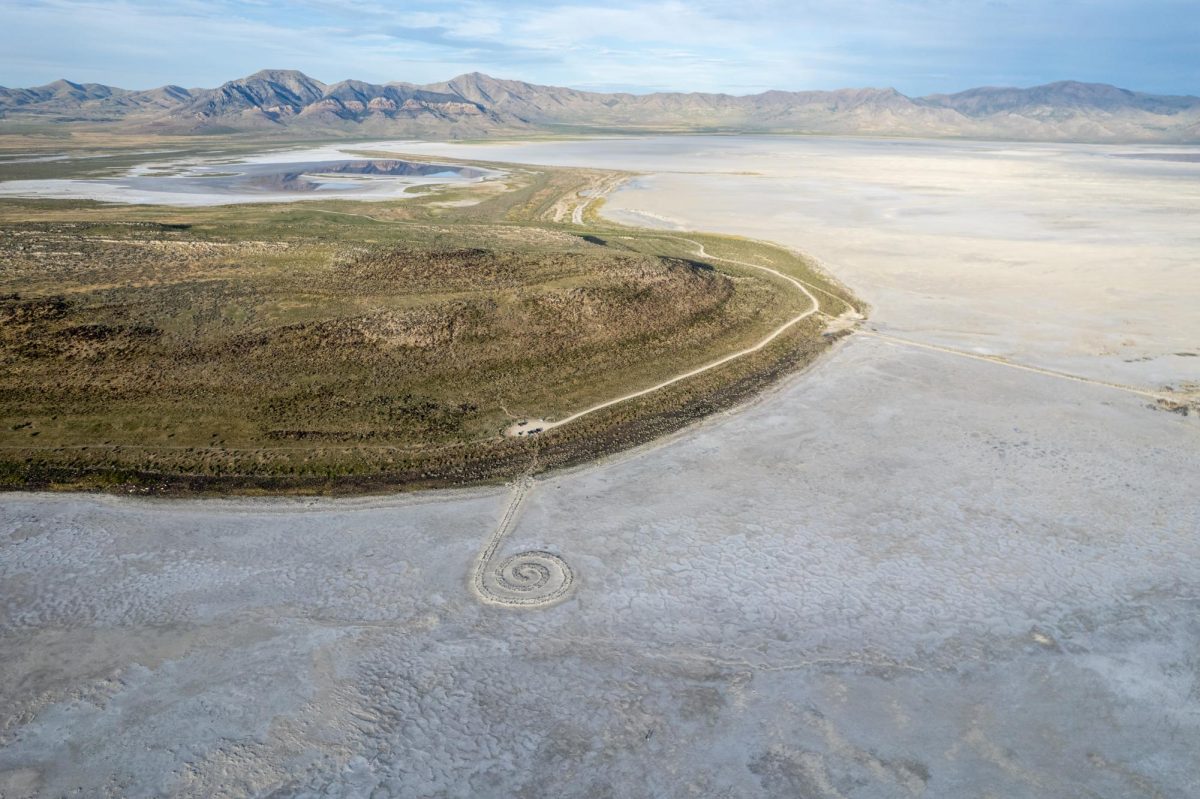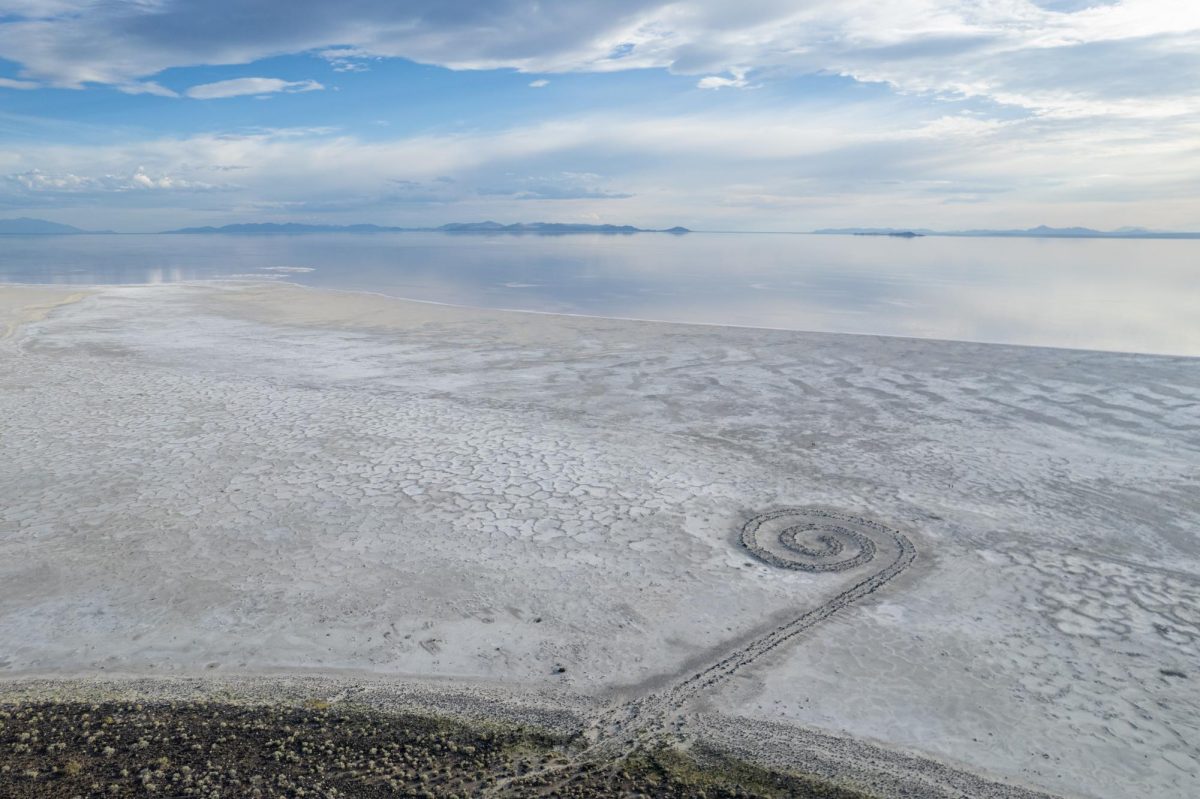Recently, I visited the Spiral Jetty for the first time. I walked along the path, trudging through loose dirt. It looked as though the sand was in the process of burying the jetty. Large black rocks outlining its swirling shape were stuck in the ground without any elevation. Standing on the jetty, looking out through my binoculars, I couldn’t make out my friends at the lake’s edge through the heat distortion. Not a single one of artist Robert Smithson’s salt crystals was in sight.
Works of art like the Spiral Jett have the power to challenge public notions. In the jetty’s case, it unintentionally prompts us to shift our environmental priorities and save the Great Salt Lake.

Smithson’s Artwork
The Spiral Jetty is a piece of land art at Rozel Point on the Great Salt Lake’s northeastern shore. It’s a 1,500-foot-long spiral pathway comprised of over 6,000 tons of local basalt rocks resting on the lakebed. Smithson completed the piece in 1970 and modeled it after a typical jetty, a projecting structure in water that serves as a dock, walkway or barrier.
Smithson intended the jetty to reach just a few inches above the water. He was also obsessed with the salt crystals that the saline water would leave on the jetty. In his written piece, “The Spiral Jetty,” Smithson discussed those crystals extensively. He wrote how salt crystal growth “echoes the Spiral Jetty.” The spiral form of the jetty continues its shape in larger iterations, much like how salt crystals form by repeating their center unit.
“The Spiral Jetty could be considered one layer within a spiraling crystal lattice, magnified trillions of times,” Smithson wrote.
This view would make the Spiral Jetty out to be immortal: the installation would always be there, beneath the waves or crystalizing just above the lake’s surface. For nearly thirty years after its completion, the jetty was largely submerged. After a brief reemergence from 1993 to 1996 followed by another six years of submersion, the Spiral Jetty has been above water and visible since 2002.
The Jetty Now
In addition to salt crystals, Smithson was also interested in entropy, the world’s natural decline into disorder. He chose Utah’s delicate desert landscape in part because there was a chance his work would decay, or at least change as the land did. The Spiral Jetty has changed with the landscape. In doing so, it has unintentionally illustrated the danger the Great Salt Lake is in and become a symbol of climate change and environmental justice in Utah.
The sculpture is the perfect measurer for the Great Salt Lake’s receding waterline. Its massive scale contextualizes how tremendous the lake’s recent shrinkage has been. As of now, the Great Salt Lake has shrunk by two-thirds. This is something Smithson, who died in 1973, could have never predicted.
Along with experiencing massive droughts, we have been overusing the lake’s watershed. The lake may soon become uninhabitable for the native flies and brine shrimp, and the birds that consume them. The low water level may also lead to toxic dust storms that would impact human health.

Art as Activism
Art has long been a tool for activism and social change. Since World War II, there have been many notable activism artworks, including the “Silence = Death” design from the AIDS epidemic. In 2020, Black Lives Matter activists decorated the Robert E. Lee Memorial statue with the names of victims of police violence.
Locally, the Youth Activist Art Archive showcases art pieces by those 26 and younger that address social issues. Art, in all its forms, has the power to communicate complex, difficult topics. From colonial times to Women’s Suffrage to war protests and contemporary use, art has long been used to challenge harmful cultural ideals.
The Spiral Jetty was originally a commentary on chaos and the world. Although Smithson didn’t intend the Spiral Jetty to show the outcomes of our overuse of the Great Salt Lake, it has. Art interpretations are undoubtedly subjective, but messages are still there. As times change, messages within art also change, much like how the Spiral Jetty has evolved alongside the world.
The Spiral Jetty is no longer submerged or covered in glittering Salt Crystals. We have to listen to this artwork and see the message its sand-covered rock path is telling us. We have to do better for the Great Salt Lake.




